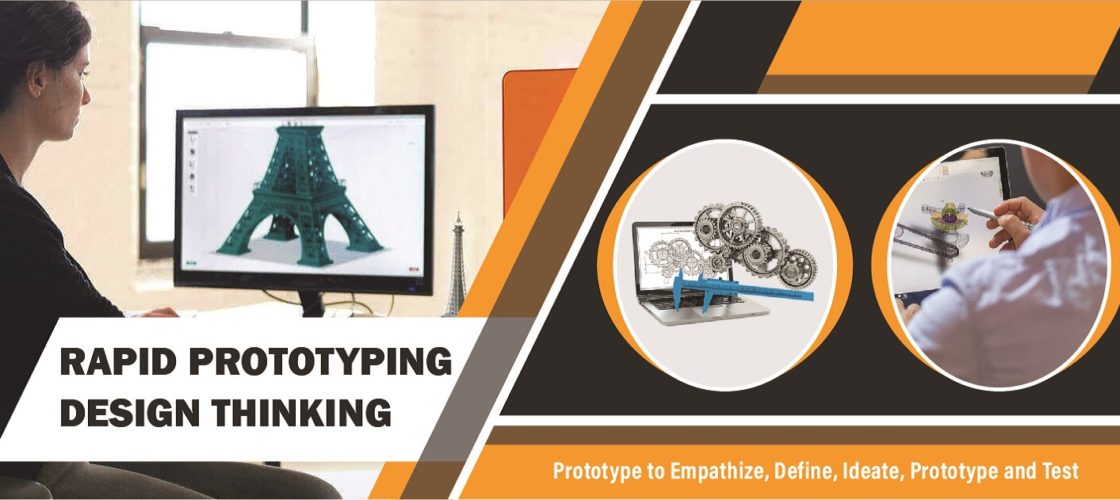Design thinking is a scientific approach for new product development, strategy development and for ‘truly’ meeting customers’ needs. It’s used to provide a framework which helps engineers, designers, or product development teams to identify a problem and to find appropriate solutions. It’s extremely useful in tackling complex problems that are ill-defined or unknown by
a. Understanding the human needs involved
b. Reframing the problem in human-centric ways
c. Creating many ideas in brainstorming sessions, and
d. Adopting a hands-on approach in prototyping and testing.
Prototype to Empathize, Define, Ideate, Prototype and Test:
We should use prototyping as part of various stages of Design Thinking.
1. Empathize:
It is the first step in the design thinking process. This step focuses on keeping the human at the center of the problem-solving process. It literally means empathizing with the customers to understand their desired and unmet needs and to identify what they really want from the solution to their problem.
2. Define:
After understanding the problem the next step is to define it.
3. Ideate:
The third step is to ideate and to generate a stream of ideas to solve those identified problems. The objective here is to generate a wider range of ideas.
4. Prototype:
The next step of the design thinking process is very important from a product manufacturing point of view. This step encourages the engineers to experiment with the ideas created in the earlier step. Experimentation and prototyping is extremely important for understanding the customer’s reactions and feedback on the generated ideas and do modification if needed.
5. Test:
Testing is the final process of design thinking. It helps us to evaluate whether the designed solution meets the desired requirement or not.
Four Important Considerations of Design Thinking:
A more profound approach to design thinking incorporates four important considerations: human considerations, business considerations, technical considerations, and environmental considerations.
A. Human Consideration:
It directly relates to empathizing with the customer to understand their needs and wants.
B. Business Considerations:
There should have a viable business sense in manufacturing and selling those products. The products should generate enough value for all stakeholders involved.
C. Technical Considerations:
This relates to the technical aspects of the product like: manufacturability, durability, economics and other such considerations that can hamper the product overall value.
D. Environmental Considerations:
Environmental consideration is an important aspect to design a product. This relates to the considerations regarding environment-friendly materials, processes, and saving resources.
Why design thinking is the key to 3D Printing success?
Designing prototypes with conventional manufacturing technologies is a costly affair and time consuming process. By implementing the design thinking approach, manufacturers can take advantage of the capabilities of 3D printing to create products that revolve around the customer’s requirements.
3D printing technology has the capability to rapidly iterate, as 3D models can be rapidly manufactured using a 3D printer. The prototype can then be tested for any functional or design discrepancies. If found any, the model can be modified and again 3D printed rapidly as the first time and again tested for any errors.
The number of ideas thus generated in can be rapidly manufactured and experimented with, to shortlist the best products which will be introduced in the market. This reduce time and cost.
